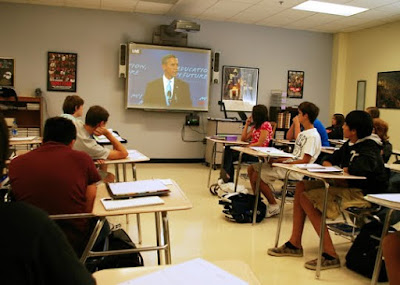
Tomorrow President Obama is giving his Back-t0-School Speech. Many teachers across the nation will be showing the event live in their classroom. Unfortunately while teachers are tuning in students may tune out. Here is an idea I got from another teacher about how to engage students while listening to speeches and public addresses.
Prior to the speech ask students what kinds of words they think might come up in the President's speech on the topic of back-to-school. Brainstorm 10-20 words and then make a list (i.e. school, education, future, etc.). Have them try and think like the President. What might he say to try to motivate students from all levels and backgrounds? Have students copy that list on a piece of paper. During the speech have them listen carefully and put a check next to any word that the President uses that is on the list. If he uses it it more then once the word gets checked again. Note any words that seem to come up a lot that you didn't list. After the speech compare your results and discuss why they thought some words were mentioned and others were not. Did the words used help convey his overall message? Could they summarize his speech using words on the list?
I did this with the President's inauguration and it worked like a charm. All the students were keyed in and checking their word list. The discussion afterward was certainly more engaging then if the event had been strictly passive on the student's end. This is one of those ideas that could be used from elementary to high school.
Comments